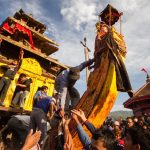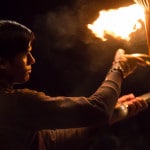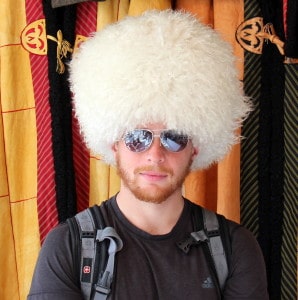In Tibetan Buddhist culture, prayer flags are an ever-present reminder of religiosity in the course of day-to-day affairs. In every instance of this cultural background that I’ve seen, from the far north of Mongolia and south to the Himalayas of Nepal, I’d seen prayer flags fluttering everywhere but never made a point of learning about what it is that they signify.
Finally, while watching a video introduction at Tengboche Monastery a day or two before the Mani Rimdu festival, I was prompted to do a little research and figure out exactly where they come from and what they stand for.
Though originally part of the local Bon culture that predated Buddhism in Tibet, like with so many other religions with time the dominant spiritual tradition subsumed many elements of the shamanistic tradition that came first. These wind horses, often found strung up on the highest passes and lowest bridges and always where they can flutter in the mountain winds, represent different earth elements according to their color.
Blue stands for space or the sky.
Green represents wind and the air.
White means water and the seas.
Red portrays fire.
Yellow stands for the soil of the earth.
As the lightest breeze blows through the flags, Tibetan Buddhists believe, each movement carries compassion and goodwill over the world across all of humanity. So, consider yourself blessed!
When Matt and I were in Tibet a few summer ago, at Namtso Lake, the ones we bought were so dirty and torn thay looked like they had been torn straight from the heights nearby and delivered to our waiting pockets. The fact that the guy we bought them from disappeared for a bit while we wandered and photographed for a bit only heightens this assumption. I’m pretty sure, though, that this is not traditional practice.
Now, don’t say I never taught you anything!







